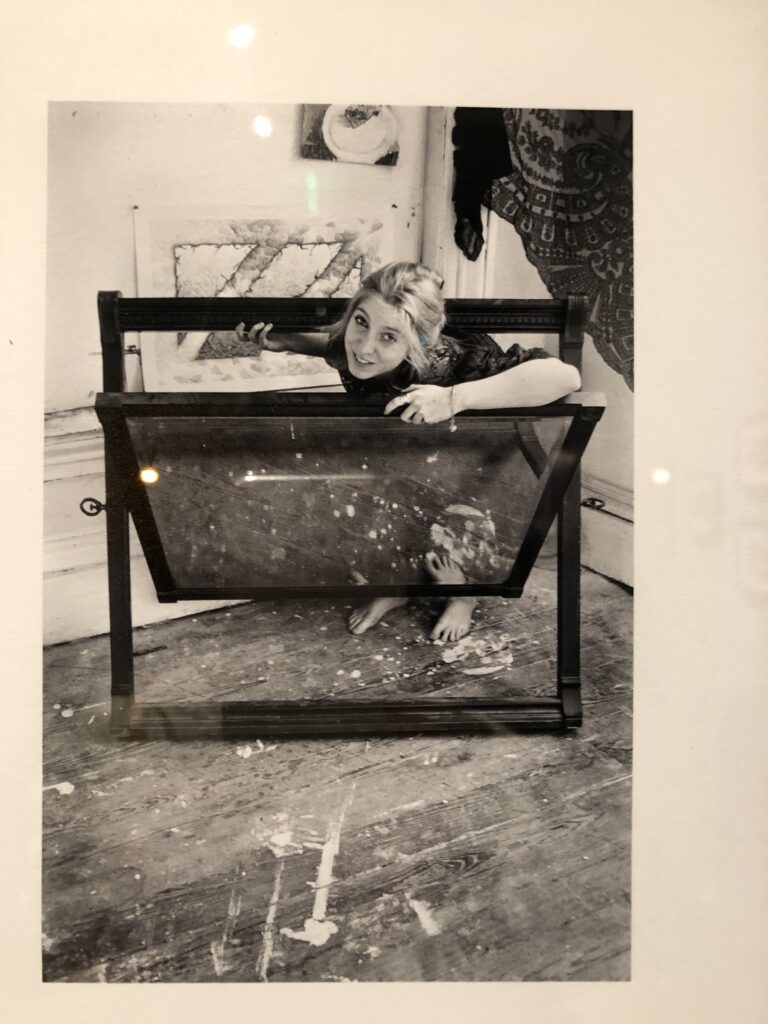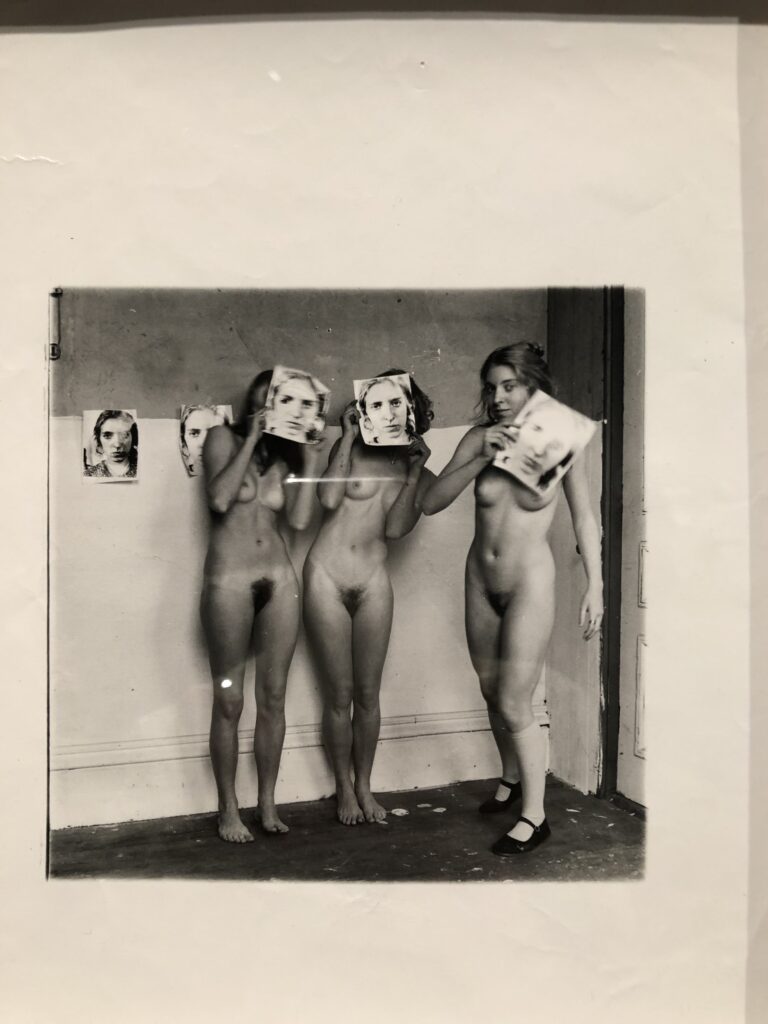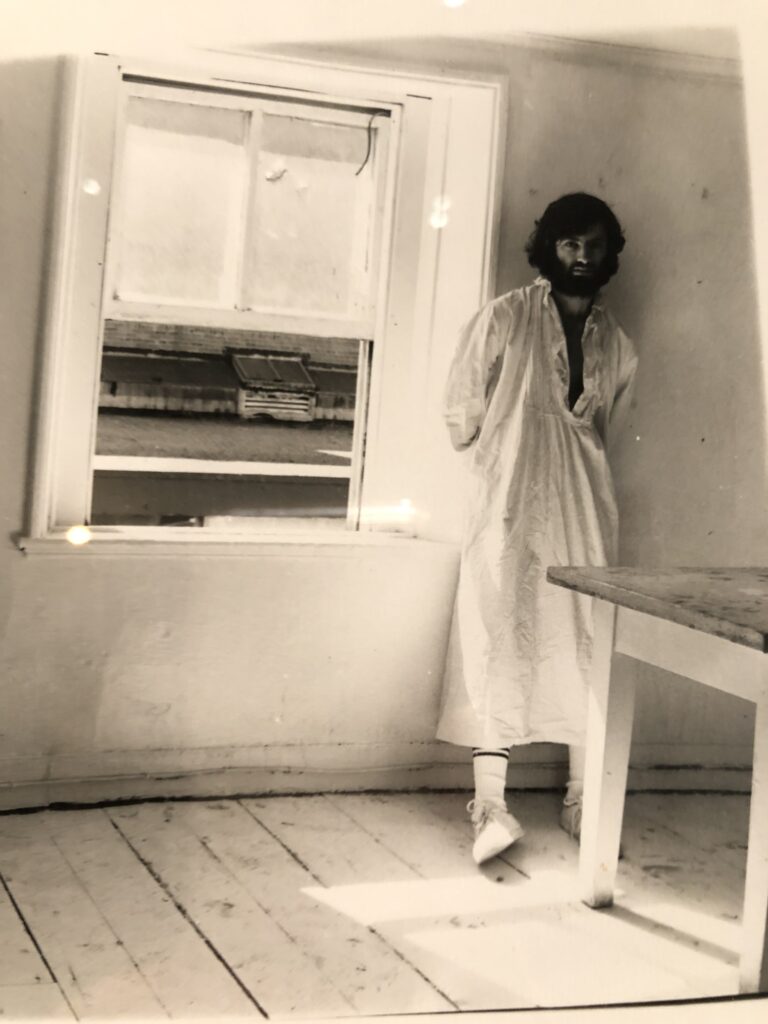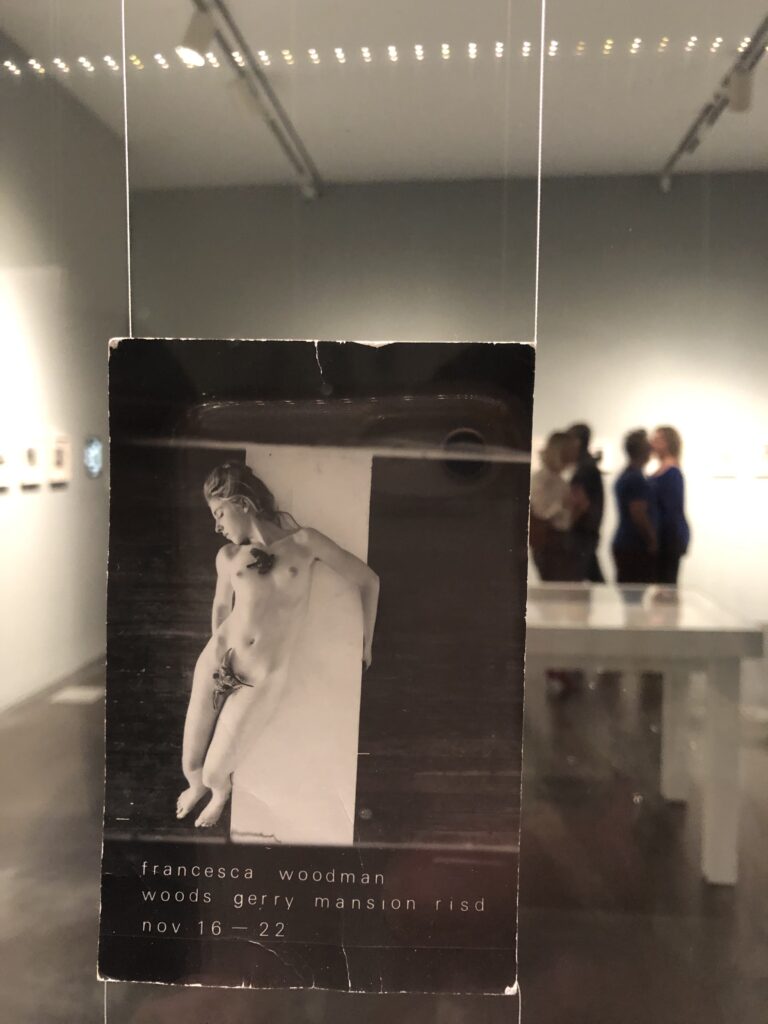

In writing about his friend photographer Francesca Woodman, George Lange talks about a “magic box” that he kept after she died in 1981, a box of relics – not only photographs but clips of hair, napkins, contact sheets, scrawled notes, goofy things for she was fun and silly. For decades, he couldn’t open it – beware the risk of dark holes! And then he did.
What’s fascinating is the tumble effect, the successive falls into were engendered by that opening. The contents became a show, staged in Denver at the Museum of Contemporary Art, and I had the good fortune to hot-tail, then fall into the opening. George is my dear childhood friend from Pittsburgh, and when I started college at Brown, he and Francesca were fast friends down the hill at RISD, in Providence.
Fast-forward to the opening this fall, (multivalence of words). Walking through the frames – Francesca’s pictures that George had salvaged, and his own beautiful work of their everyday – I began slipping in time, crossing into those set pieces, stages, surreal concoctions. Down the rabbit hole I went along with the seductress Francesca playing with borders and playing with time, still exerting her desire to plunge deeper and deeper into inanswerable questions. She seemed fully formed, fully live, slipping in and out of vision, never impossible and never possible to grasp.
Border crossings were preoccupations of Francesca, who might be seen as a Rimbaud-like figure, having done her major work by age 22 (Rimbaud wrote all his poetry before quitting at age 21 — not committing suicide). Like Rimbaud, her work, though twisted and sometimes violent, finds its power in its moving and radical innocence. Somehow behind it all, there is an Eden, an Eden of the mind. That fugitive Eden must be lost; we find it in art, lose it, seek those moments where it flows through us. The limitless creative freedom of youth is intoxicating. Artists change, and Francesca never aged with us; she is preserved without the real grunge of disillusion that we gather moss.
George wanted to show his friend’s playfulness, free-spirited rather than the doomed gloomy genius that in fame since her death she’s become. What comes through is the affirmation, the yes that denies despair as truth. George and his camera were there, in attendance to the astonishment of the everyday, an everyday that is layered, strange, full of risk. The work lives in the space of creative freedom that accepts but also affirms conditions that we love and sometimes might have wanted to escape.



